Historically, the Tricolored Blackbird bred in immense colonies in natural freshwater wetlands of the Central Valley (Figure 2), and hunted for insect prey to provision its young in surrounding foraging landscapes composed of grasslands and other upland habitats. Over time, the amount of suitable native breeding habitat has declined due to anthropogenic conversion of wetland and upland habitats to other land cover types, including agriculture and urban areas, and limited water supplies to support wetland habitat during the drier spring and summer months. The Tricolored Blackbird has adapted to use alternative nesting substrates (in addition to remnant wetland habitats), and in recent decades the largest breeding colonies have occurred in agricultural grain fields (mainly triticale, a wheat-rye hybrid grain grown for dairy cattle feed) in the southern Central Valley (Figure 3).
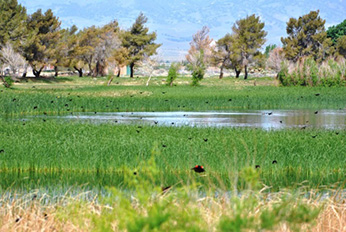 Figure 2. Tricolored Blackbird colony in a freshwater wetland. © Alice Wollman, all rights reserved. (click/tap to enlarge)
Figure 2. Tricolored Blackbird colony in a freshwater wetland. © Alice Wollman, all rights reserved. (click/tap to enlarge)
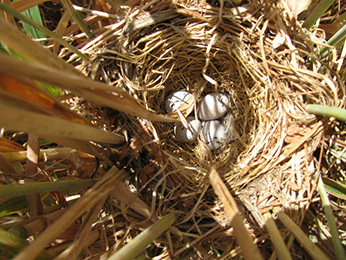 Figure 3. Tricolored Blackbird nest in a triticale grain field. © Jesse Bahm, all rights reserved. (click/tap to enlarge)
Figure 3. Tricolored Blackbird nest in a triticale grain field. © Jesse Bahm, all rights reserved. (click/tap to enlarge)
Need for Drought Stressor Monitoring
The Department’s approach to drought stressor monitoring and conservation of the Tricolored Blackbird involves expanded surveys for breeding colonies, collaborating with the Natural Resources Conservation Service (NRCS) and other partners to protect known breeding colonies, conducting research on the effect of drought on Tricolored Blackbird habitat and breeding success, determining the best opportunities for habitat protection and management, and implementing initial habitat restoration projects to benefit the species and improve habitat resiliency.
With the shift in habitat use by large breeding colonies to agricultural grain fields, a conflict has arisen between breeding Tricolored Blackbirds and the harvest of crops. The breeding season coincides with the harvest period and many thousands of nests, eggs, and young have been lost in recent decades when grain fields have been harvested before the nesting cycle is complete (Figures 4 and 5). Because the locations of breeding colonies shift each year, it is necessary to search for colonies annually so that efforts can be made to protect colonies that occur on agricultural fields. With the ongoing drought, the amount of natural wetland habitat available for breeding Tricolored Blackbirds has become even more limited, resulting in a heavy dependence on agricultural sites for nesting by a large proportion of the population. This has led to a greater need for protection of these large colonies.
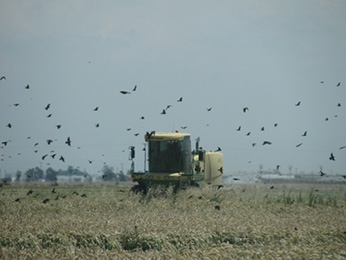 Figure 4. Harvest of a field containing foraging Tricolored Blackbirds. © Jesse Bahm, all rights reserved.(click/tap to enlarge)
Figure 4. Harvest of a field containing foraging Tricolored Blackbirds. © Jesse Bahm, all rights reserved.(click/tap to enlarge)
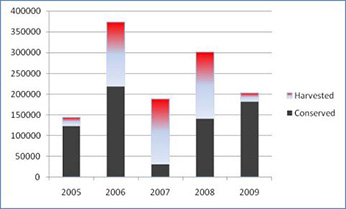 Figure 5. Proportion of colonies (number of breeding birds) on agricultural grain fields harvested vs. protected, 2005-2009. Figure from Meese (2009). (click/tap to enlarge)
Figure 5. Proportion of colonies (number of breeding birds) on agricultural grain fields harvested vs. protected, 2005-2009. Figure from Meese (2009). (click/tap to enlarge)
Tricolored Blackbird breeding colonies use a relatively narrow set of nesting substrates, including wetlands, triticale fields, and a few other upland habitats, and also require a water source and a large, productive foraging landscape (within about 3 miles of the colony site) in order to provide for nestlings in the colony (Figure 6). Although these breeding habitat requirements are well-established, information on the amount, type, and configuration of foraging habitats necessary to support a successful colony is limited. Additional research is needed to characterize the landscape around colony sites, and evaluate the effect of these landscapes on the occupancy, size, and success of breeding colonies.
A high priority for long-term conservation of the Tricolored Blackbird is to create alternative nesting habitats to draw colonies away from agricultural fields, thereby eliminating a conflict with agricultural operations, and improving population resiliency from the effects of other environmental stressors such as drought. The best opportunities for habitat protection and restoration can be informed by the research and mapping activities described above.
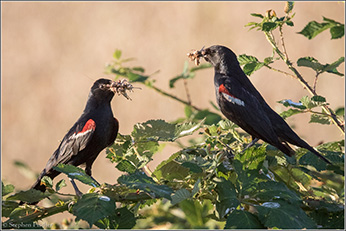 Figure 6. Tricolored Blackbird adults with insect prey for nestlings. © Stephen Fischer, all rights reserved. (click/tap to enlarge)
Figure 6. Tricolored Blackbird adults with insect prey for nestlings. © Stephen Fischer, all rights reserved. (click/tap to enlarge)
Stressor Monitoring Efforts
Colony Detection, Monitoring, and Protection
CDFW contracted with Dr. Bob Meese (UC Davis) and consulting biologist Scott Frazer (retired USFWS) to conduct regular surveys of the Central Valley throughout the breeding season. Following discovery of breeding Tricolored Blackbird colonies, all known colony sites were routinely revisited to monitor status and evaluate any threats to the birds. When a colony was detected on an agricultural grain field, the landowner was contacted and CDFW collaborated with NRCS to ensure colonies were protected by offering financial compensation for delays in harvest of the crop. Rapid response to threatened colonies, and effective communication with landowners, was ensured through a colony response partnership with NRCS, Audubon California, Western United Dairymen, and the California Farm Bureau.
Research on Drought Impacts and Foraging Landscape
CDFW has contracted with scientists at UC Davis and at the National Audubon Society to assess the effects of precipitation and water availability on colony size, colony occupancy, reproductive success, and use of different types of habitat. This work will also evaluate potential drought impacts on foraging habitat availability at the landscape-scale. A spatial modeling exercise is also being conducted to characterize the foraging landscape around successful colonies, and changes in these landscapes over time. This work will ultimately be used to prioritize areas for conservation and restoration of breeding habitat.
Habitat Restoration
CDFW has partnered with the Lower Tule River Irrigation District and the US Fish and Wildlife Service to restore high quality breeding habitat at a groundwater recharge basin in Tulare County. This site has historically supported large (up to 40,000 breeding adults) Tricolored Blackbird colonies, but a lack of a reliable water source caused the wetland breeding habitat to degrade and the site has been unoccupied for many years. CDFW has funded the repair of a well that will provide reliable water to the site, and the USFWS has agreed to provide local biologists who will advise the Irrigation District on best management practices for Tricolored Blackbird breeding habitat. The site is located within a few miles of several other colony sites that have occurred on agricultural fields of triticale, and therefore is expected to provide an alternative nesting location without conflict with local dairies.
Findings
Colony Detection, Monitoring, and Protection
CDFW led an effort during the 2016 breeding season to locate and monitor all breeding colonies that occurred on agricultural grain fields where they are vulnerable to losses due to harvest. CDFW contractors and staff, Audubon California, and other cooperators located Tricolored Blackbird colonies on nine different farms in 2016. One of these colonies failed due to predation shortly after establishment, but through cooperative agreements with farmers, all remaining Tricolored Blackbird colonies on agricultural fields were protected during the 2016 breeding season. Working with the NRCS and other partners, eight farmers delayed their harvest, resulting in the protection of about 60,000 nesting Tricolored Blackbirds. Programs that compensate landowners for delay of harvest have existed for many years, but 2016 was the first year every colony found on an agricultural field was enrolled in a colony protection program.
Habitat Restoration
The well that will be used to support wetland breeding habitat restoration in Tulare County is currently being repaired (August 2016). The well will maintain water on a 40-acre wetland and will be managed, in cooperation with CDFW and the USFWS, to enhance the quality of the site for breeding Tricolored Blackbirds. It is expected that the site will support productive breeding habitat beginning in the 2017 breeding season.
Future Efforts
CDFW works closely with the Tricolored Blackbird Working Group, including committees on habitat restoration and research. The work conducted with drought funds will inform ongoing efforts to implement the Tricolored Blackbird Conservation Plan, including restoration of natural habitats that will provide long-term benefits and increase resiliency to ongoing and future drought. Opportunities to protect and create habitat will be informed by the ongoing research on landscape conditions around successful breeding colonies. Habitat at the restored wetland in Tulare County will continue to be monitored through the life of the agreement with the Irrigation District and the USFWS (through year 2027). Although not funded with drought resources, CDFW will assist with coordination and implementation of the upcoming 2017 triennial statewide survey, which will inform the population status and reveal whether recently observed declines have continued.
Visit Tricolored Blackbird Portal for more information about the Tricolored Blackbird